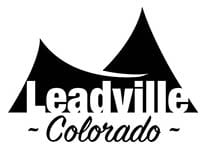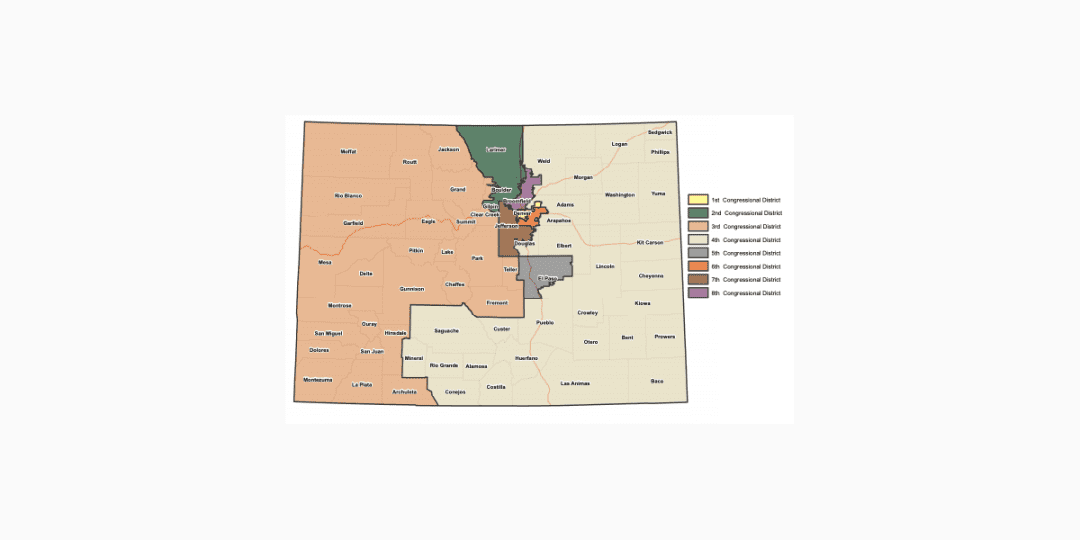
Colorado’s new, eighth congressional district would include the cities of Arvada, Westminster, Broomfield, Thornton, Brighton and Platteville under a preliminary map drawn by nonpartisan redistricting staff and presented to the state’s Independent Congressional Redistricting Commission on Wednesday.
Staff placed the new district in the north Denver metro area for two reasons, said Jeremiah Barry, a legislative attorney advising the redistricting commissions.
“The first reason was we recognize this was the fastest-growing area of the state,” said Barry. “The second was a recognition that although nearly 30% of the population of the state are Hispanics, none of the current seven districts are represented by a Hispanic.”
The map is a major first step in the state’s once-a-decade redistricting process. It will evolve as the commission gets input from the public and interest groups over the next few months.
The preliminary map is based on 2019 U.S. Census Bureau estimates because of a monthslong delay in the release of the final population data collected during the 2020 Census. Once the U.S. Census Bureau releases that data in August, redistricting staff will have to adjust the map.
“It’s the starting line, but nowhere near the finish line,” Curtis Hubbard, a Democratic political consultant who is registered to lobby the redistricting commissions, said of the preliminary map.
The initial map, the public’s first glimpse at how the 8th District will affect the state’s political landscape, also makes changes to the state’s existing seven congressional districts.
The 3rd District, represented by Republican Lauren Boebert, of Garfield County, would gain Eagle, Summit, Grand, Park, Teller and Fremont counties, as well as some of western Boulder County. The San Luis Valley and Pueblo County would be dropped and added to the 4th District, which includes northeast and southeast Colorado and is currently represented by U.S. Rep. Ken Buck, a Republican from Windsor.

The 5th District, currently represented by U.S. Rep. Doug Lamborn, a Colorado Springs Republican, would be limited to El Paso County, cutting out its western counties, except for the southeastern part of the county.
The 7th District, centered in Jefferson County and currently represented by U.S. Rep. Ed Perlmutter, an Arvada Democrat, would shift south to include Castle Rock, dropping some of Denver’s northwest suburbs, including the bulk of Arvada.
Want exclusive political news and insights first? Subscribe to The Unaffiliated, the political newsletter from The Colorado Sun. That’s where this story first appeared.
or upgrade your membership.
Perlmutter, however, would remain in the 7th District under the preliminary map, though only narrowly.
Under the proposed map, the 7th District would be the state’s most competitive, according to the 2018 election results in the Colorado attorney general’s race. Republicans won in the new proposed district by 3 percentage points.

The 1st District, represented now by U.S. Rep. Diana Degette, a Denver Democrat, would encompass only Denver, and the 6th District, represented by U.S. Rep. Jason Crow, a Centennial Democrat, would lose part of its northern half while continuing to include Aurora, Centennial and Littleton.
Colorado’s population grew 14.5% from 2010 to 2020, making it one of six states that will get one or more new congressional seats in 2022 due to population gains.
Colorado’s seven existing congressional districts are currently represented by four Democrats and three Republicans.
The map is nonpartisan legislative staff’s initial effort at redrawing the congressional districts, under a 2018 constitutional amendment — Amendment Y — approved by voters.
“Indeed, in this plan, of the 64 counties in the state, 55 are wholly contained within one Congressional district,” said Barry.
This year marks the first time independent commissions created by Amendment Y and a companion ballot question, Amendment Z, are overseeing the once-a-decade redistricting process in Colorado.
In the past, state lawmakers drew the congressional lines, though they often deadlocked and courts decided on the final districts.
This is a developing story that will be updated.

The Colorado Sun has no paywall, meaning readers do not have to pay to access stories. We believe vital information needs to be seen by the people impacted, whether it’s a public health crisis, investigative reporting or keeping lawmakers accountable.
This reporting depends on support from readers like you. For just $5/month, you can invest in an informed community.
This content was originally published here.

